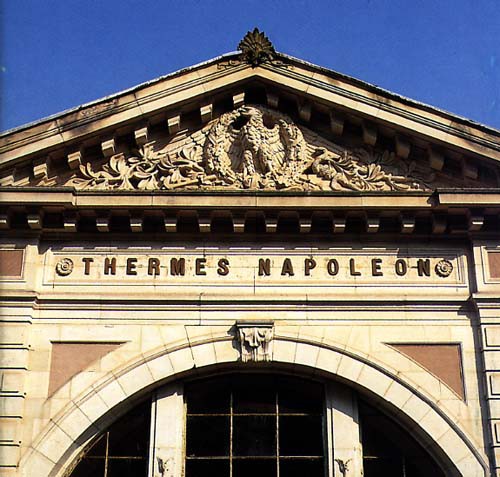Plombières-les-Bains, a thermal spa which dates back to Roman times, gained its reputation during the First and second Empires.
From 1798 to 1814, many members of the Bonaparte family stayed at Plombières: Napoleon's mother (1801), Pauline (1800 and 1806), Louis (1804), Joseph and his wife Julia (who visited Plombières five times between 1800 and 1811), Hortense and Josephine (five visits between 1798 and 1814). The Spa's reputation for curing fertility problems prompted the future Empress, who hoped to give her husband an heir, to spend some time there in 1800 and 1801. As for Hortense, it was at Plombières that she heard news of Louis' abdication and the loss of her title. Besides the imperial family, many celebrities of the time came to enjoy the benefits of Plombières: Bernadotte and Désirée, Clary, his wife, Maréchal Coulaincourt, Maréchal Clarke, Maréchal Ney, Maréchal Oudinot, Princess Stephanie of Bade, Madame Récamier, etc…
Despite its famous visitors, Plombières gradually lost its appeal after the Fall of the Empire. It owed its rebirth in 1856 to Napoleon III. Following the Napoleonic decree of July 12, 1811, whereby all the spas of the town were nationalized, the Emperor created a development company with a mission to develop new spas and restore the older ones.
During his reign, the Emperor would visit the Vosgian town up to five times a year for the treatment required for his poor state of health. He started off staying at the Le Bain Stanislas (known today as the Bain des Dames), a small 18th century hotel, before settling at the Pavillon des Princes (today the Bain Stanislas), a building whose architectural simplicity astonishes visitors even today. The Emperor's famous meeting with Cavour during which the fate of Italy was decided took place at the Pavillon des Princes. The Napoleon Spa, whose first brick was laid down by the Emperor himself on July 22, 1857, still operates as an establishment while Tivoli Park, laid out according to the Emperor's tastes, is an ideal place for walks. Among the vast town planning arrangements commissioned by Napoleon III, a neo-Gothic church drawn after Viollet-le-Duc is particularly noteworthy…
Plombières-les-Bains


